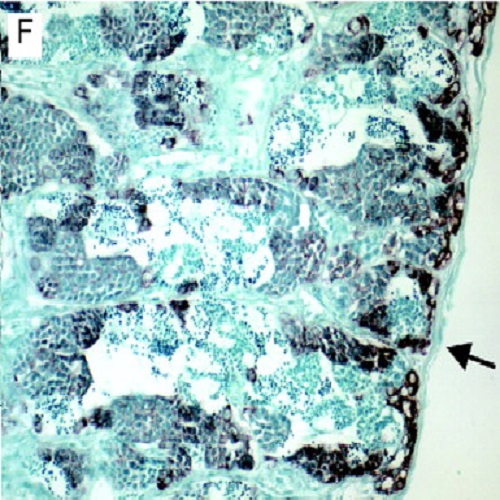The social status of the male Nile tilapia (Oreochromis niloticus) influences testis structure and gene expression.
Dominant and territorial behaviour are known social phenomena in cichlids and social stress influences reproduction and growth. The gonadotropic hormones trigger spermatogenesis and subordinate males have typically lower levels of gonadotropins than dominant males. In this study, we compared testis morphology and gene expression of dominant and subordinate Nile tilapia males (d- and s-males) in socially stable communities. The d-males had the highest gonadosomatic index but they were not the largest animals in the majority of studied cases. Long-term d-males showed large groups of Leydig cells and hyperplasia of the tunica albuginea due to numerous cytochrome-P450-11?-hydroxylase (Cyp11b) expressing myoid cells. Increased Cyp11b expression in d-males was reflected by elevated 11-ketotestosterone plasma values. However, immunofluorescence microscopy and expression analysis of selected genes revealed that most s-males conserved their capability for spermatogenesis and are, therefore, ready for reproduction when the social environment changes. Moreover, in s-males gene expression analysis by quantitative RT-PCR showed increased transcript levels for germ line-specific genes (vasa, sox2 and dmc1) and Sertoli-specific genes (amh, amhrII and dmrt1) whereas gene expression of key factors for steroid production (sf1 and cyp11b) were reduced. The Nile tilapia is a promising model to study social cues and gonadotropic signals on testis development in vertebrates.

- Reproduction 2012 Jan 1;143(1):71-84
- 2012
- Developmental Biology
- 22031714
- PubMed
Enabled by:
